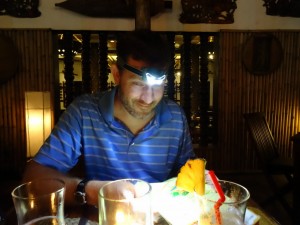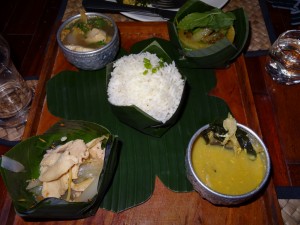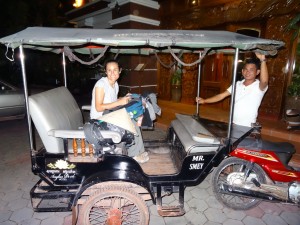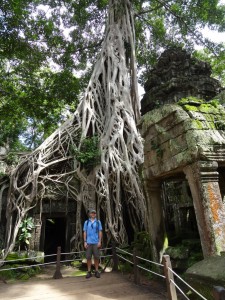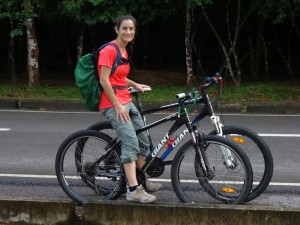Our first day in Cambodia, Ryan and I ate dinner in a restaurant that mostly caters to foreigners, providing a tasting menu of local Khmer food. Granted, by the time we ask for no nuts and no spice, we aren’t exactly getting the full local food experience. We also ordered a ‘safe’ caesar salad, as a back-up, which turned out to be pretty funny, because Ryan then decided he didn’t want to eat any uncooked, unpeeled vegetables (eg. lettuce) in Cambodia. The first course consisted of three salads, all very fresh with fruits and herbs, perfect in the warm and humid weather. The second course of mains ranged from chicken soup to amok fish, a local dish made with fish caught in the river. The third course was dessert; two bowls of beans in sweet coconut milk, my favorites, and then cooked sweet potato and mango custard. Oh, and one complementary glass of local rice wine that really cleared out our sinuses. I had no idea what Cambodian food was going in to the dinner and was surprised at how delicious it all tasted.
The evening after the Big Circuit bike ride, Ryan and I attended the Phare Cambodian Circus, a great combination of story, music, and acrobatics, with a social mission to help disadvantaged youth in Cambodia. It was a very small round venue, with seats almost on the stage, making you feel up close and personal with the entertainers. The upbeat music had us clapping our hands, and the acrobatics were breathtaking, especially since there is no net. What a fun show!

Restaurants and shops in Cambodia, or at least everywhere we went in Siem Reap, accept both riel (Cambodian currency) and U.S. dollars. All the ATMs in town dispense dollars and almost all prices are in USD. Everyone accepts USD and then provides change in USD or riel if the change is less than $1, using 1000 reil in place of quarters. Each 1000 riel note is approximately $0.25 — but not quite. Ryan likens it to a national effort to inflate the value of their currency since the exchange rate of 1 USD to 4056 riel is always approximated at 1 USD to 4000 riel.
P.S. We are currently hunkering down in Kuala Lumpur, Malaysia for the night (October 31), a slightly unexpected stop. Ryan got sick (reminiscent of Peru) on the first flight of our Bangkok to Perth trip through Kuala Lumpur, so we decided to skip the second flight. Luckily, he is starting to feel better already, so we should hopefully be on our way tomorrow.
P.P.S. And the Red Sox win the World Series?! I’m gone for two months and this is what happens.

